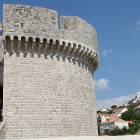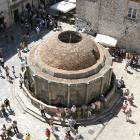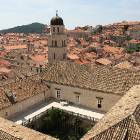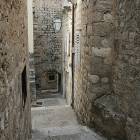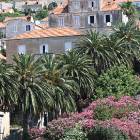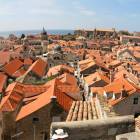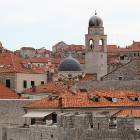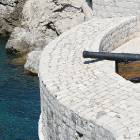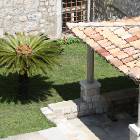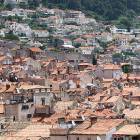Views from the walls of the medieval citadel of Dubrovnik
The two kilometers of thick walls that used to defend the city-republic in the Middle Ages are now used as a mandatory route for tourists that come from allover the world. Dubrovnik is one of the very few examples of communities that flourished behind a wall and also one of the very few examples in which this type of defense proved effective. More illustrious examples show that civilizations that define themselves by a wall generally fail: the Great Chinese wall didn’t stop the Mongols, the Walls of Constantinople finally fell under the Ottoman canon balls, while the Berlin Wall became the symbol of communism as a prison system. Rather than protecting, such walls often bring the downfall of a society that becomes disconnected from the progress in the rest of the world.
This was not the case with Dubrovnik, because isolationism was not in the nature of this small city-state, which was a real republic and an open society. Its prosperity was due to the trade with most of the world and to its diplomacy. Some of its ships sailed so far as the New World or India, bringing with them the pride of a free small republic surrounded by empires, who was one of the first to abolish slavery and to have social institutions like schools and hospitals.
The trade model is probably the opposite of a fortress society, surrounded by walls. The Greeks were among the first to turn the trade model into a successful one, establishing hundreds of cities on all the shores they could reach, prospering from trade and helping local populations to turn from rural to urban. Most likely the Greeks themselves established Dubrovnik, known as Ragusa until the Slavs gained dominance. The first great period for the city on the shores of Adriatic must have been under the Christian Greeks, the Byzantines. Than, for centuries, like many former Yugoslav resorts and cities, Dubrovnik was under the Venetian influence. A beneficial influence that made cities like Budva, Trogir, Zadar and many others acquire an excellent taste in architecture.
The walls of Dubrovnik were built in half of millennium, in the 12 and 17 century. They have observation points towards see and land, canons and even a moat, that is now turned into a green area. For 10 euros, tourists can climb the stairs of the walls and than take a complete tour around the old town on the walls. In some portions, the walls are thick enough to accommodate vehicles, which is amusing when looking down over the very narrow streets below. A modern way to be even above the city walls would be to take the cable car, that climbs to the nearby mountain.
Napoleon Bonaparte ended the independence days of Dubrovnik with a sea blockade. After that, the city was part of the Austro-Hungarian monarchy, of the Yugoslav monarchy and republic, parting away together with Croatia in the early 1990s. Today Dubrovnik is once again under siege, but only by the large cruising ships who wouldn’t miss “the pearl of the Adriatic”.
Mai multe despre: Architecture, Croatia • city walls • Croatia • Dubrovnik • medieval architecture • Onofrio's Fountain • stone wall • tile- Home Page
start page - Architecture
landmark buildings - Sacred architecture
places of worship - Nature
landscape photography - Concert
performing artists - Christmas
Santa Claus pictures
- Jooble
jobs for photographers - Escape
an out of control blog - Merry Christmas
The best organizer of Christmas parties - Astro photo
Eclipse hunting and astrological photography










